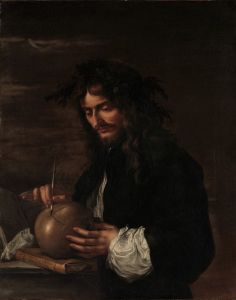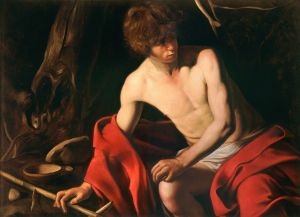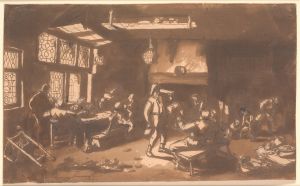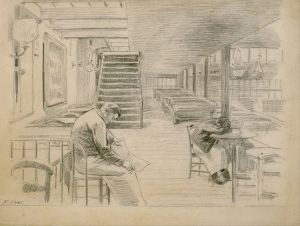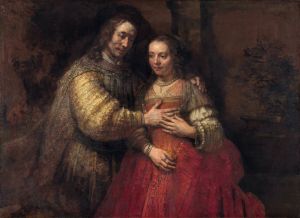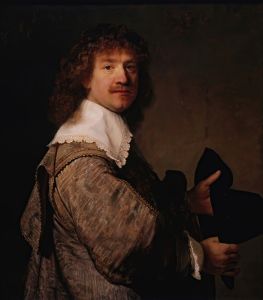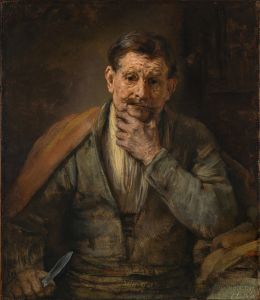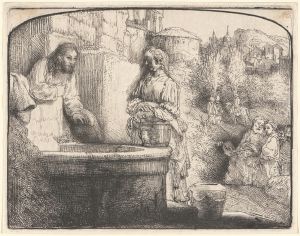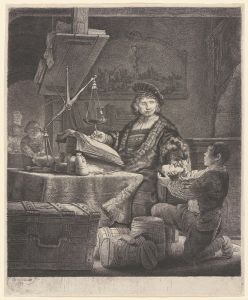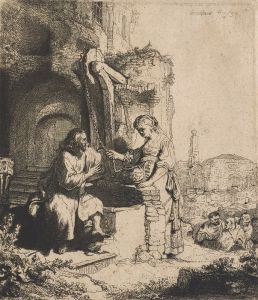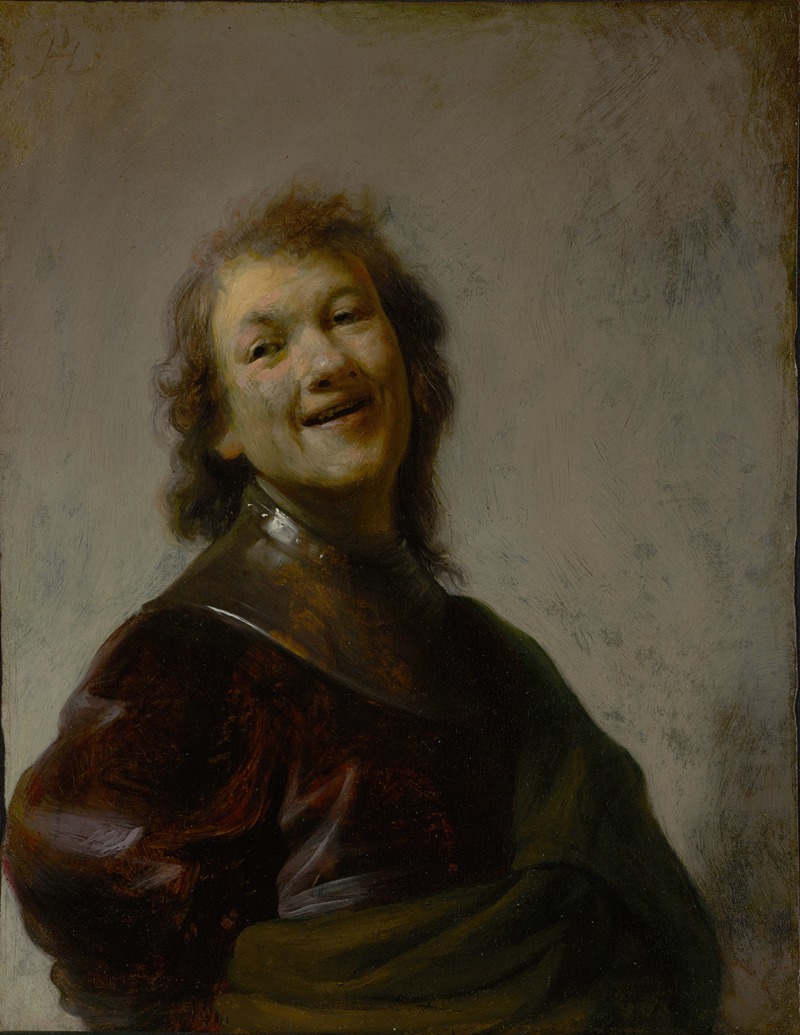
Rembrandt Laughing
A hand-painted replica of Rembrandt van Rijn’s masterpiece Rembrandt Laughing, meticulously crafted by professional artists to capture the true essence of the original. Each piece is created with museum-quality canvas and rare mineral pigments, carefully painted by experienced artists with delicate brushstrokes and rich, layered colors to perfectly recreate the texture of the original artwork. Unlike machine-printed reproductions, this hand-painted version brings the painting to life, infused with the artist’s emotions and skill in every stroke. Whether for personal collection or home decoration, it instantly elevates the artistic atmosphere of any space.
"Rembrandt Laughing" is a small oil-on-copper painting by the renowned Dutch artist Rembrandt van Rijn. This work is believed to have been created around 1628, during the early years of Rembrandt's career when he was still living in Leiden, his birthplace. The painting is notable for its intimate and informal portrayal of a laughing young man, who is widely considered to be a self-portrait of the artist himself.
The painting measures approximately 8.8 x 6.8 inches (22.3 x 17.1 cm), making it a relatively small work. Despite its size, "Rembrandt Laughing" is a striking example of Rembrandt's skill in capturing human emotion and expression. The subject is depicted with a broad, genuine smile, his eyes squinting with mirth. The use of light and shadow, a hallmark of Rembrandt's style, is evident in the way the light falls across the subject's face, highlighting the contours and creating a sense of depth and realism.
Rembrandt's choice of copper as a medium is noteworthy. Painting on copper was not uncommon in the 17th century, as the smooth surface allowed for fine detail and a luminous finish. This choice of material may have contributed to the painting's excellent state of preservation, with the colors remaining vibrant and the details crisp.
The painting is an example of a tronie, a type of work common in Dutch Golden Age painting. Tronies are character studies that depict exaggerated facial expressions or unusual costumes, often without the intention of being a formal portrait. In "Rembrandt Laughing," the artist appears to be wearing a fanciful costume, including a cap with a feather, which adds to the informal and playful nature of the work.
"Rembrandt Laughing" was relatively unknown to the public until it appeared in a 2007 auction at Christie's in London, where it was sold as a work by a "Follower of Rembrandt." However, subsequent research and analysis, including the study of the painting's style, technique, and materials, led experts to reattribute it to Rembrandt himself. This reattribution significantly increased the painting's value and importance within the artist's oeuvre.
The painting is now part of the Leiden Collection, a private collection of Dutch Golden Age paintings. The Leiden Collection is known for its extensive holdings of works by Rembrandt and his contemporaries, and it often lends pieces to major museums and exhibitions worldwide, allowing a broader audience to appreciate these masterpieces.
"Rembrandt Laughing" is celebrated not only for its artistic merit but also for the insight it provides into Rembrandt's early development as an artist. It reflects his keen interest in human emotion and his ability to convey it with remarkable clarity and immediacy. This painting, with its lively expression and masterful execution, continues to captivate viewers and scholars alike, offering a glimpse into the youthful exuberance and talent of one of history's greatest painters.





